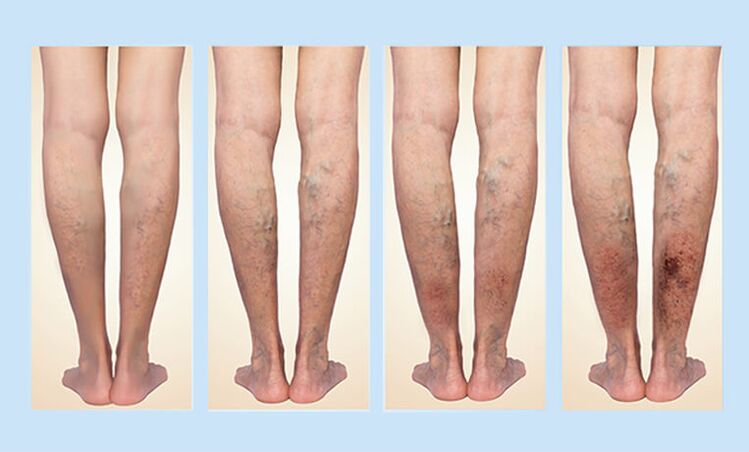There are two main methods for the treatment of varicose veins:
- conservative,
- operative.
The type of treatment depends on the stage of the disease.In patients with small caliber lesions in the form of vascular networks or stars on the legs and with isolated local lesions of some subcutaneous veins, non -surgery methods are used.
In the event of damage to large trunks of subcutaneous veins, such as a large or small subcutaneous vein as well as its large tributaries on the thigh and lower leg, operating methods are used.
In which cases can varicose veins be treated conservatively?
Each form of varicose veins requires conservative treatment.In this case, if large subcutaneous veins are not affected, but only one disease of small veins on the skin in the form of vascular nets or asterisks, is a conservative approach to treating the main approach.If the disease influences larger subcutaneous veins, conservative treatment is used as a supplement to a company manual.
Features of conservative treatment of varicose veins
The conservative treatment of varicose veins includes the following components:
- Pharmaceutical therapy.
- Modification of risk factors for varicose veins.
- Wear of compression knitting clothes or the use of elastic bandages.
- Sclerotherapy.
How can you deal with the risk factors of varicose veins?
The treatment of varicose veins should begin to eliminate the risk factors of the disease:
- The fight against hypodynamics is classes of mobile sports such as swimming, bicycle, running, sports hikes, skiing, etc.
- Increased position of the legs during the break
- Body weight control
- Rejection of static loads, severe physical work, frequent exposure to high temperatures - visit to the sauna, taking hot baths.
- Refusal to take hormonal contraceptives
- Looking to wear shoes with high hedges (more than 5-6 cm)
Compression knitting pathways
Wear of compression knitting clothes or the use of elastic bandages during static loads, i.e.H. with a long stay in the standing or seating position, it is an essential part of the treatment of varicose veins.You should opt for compression laundry, as many patients use an elastic association inadequate and draw it on different levels or vice versa.
Compression knitting paths are selected individually and has compression from the manufacturer that is the most physiological for the limb.Medical compression products (tights, stockings, golfs) have several compression classes.The type of compression is determined by the doctor by the results of the patient's examination and, if necessary, instrumental examination.
- Grade I is used to prevent varicose veins,
- II - with existing signs of the disease,
- III - in complicated varicose veins (trophic ulcer, hyperpigmentation).
The only significant restriction when using compression knitting paths is difficulty wearing.In order to facilitate the process of putting on knitwear, it is therefore advisable to use a special device - butler.In the event that compression knitting paths with the diameter of the limbs (non -standard leg configuration) are difficult to choose or other restrictions are available when using - elastic bandages with medium or short degree of expansion must be used.
Pharmaceutical therapy of varicose veins
Patients suffering from varicose veins are recommended to regularly carry out preventive courses with medication.These drugs are used 2-3 months at least 1 year a year.In summer.Medicine therapy does not heal the patient from already developed varicose veins.However, it enables them to reduce patient complaints about the feeling of severity and tiredness in their legs, their swelling.
Preparations also reduce the progression of the disease, i.H. The development of further development of varicose veins slows down and protects healthy veins.The most effective treatment is to take medication in the form of tablets, capsules or drops inside.The use of medicinal products is less effective in the form of gels, ointments, creams or aerosols.However, local use enables you to reduce the symptoms of the disease at the same time at the same time at the time of your use and therefore often use first aid as first aid in the event of an expression of expression, a feeling of severity or fatigue in your legs.
Sclerotherapy at varicose veins
Sclerotherapy is a method of treating varicose veins in which a special drug is administered in the lumen of varicose veins.
After it was inserted into the ship, its stacks are connected and lead to the "switching off" of the ship, i.H. carpet varicose veins occur.As a result, the blood is redirected to healthy vessels, and the blurred veins "switch" from the bloodstream.
Sclerotherapy is an outpatient procedure that can be carried out in a hospital without the patient's hospital stay.After every sclerotherapy meeting, it is necessary for several days or weeks to wear compression knitting or rubber bandages.In the case of large venous damage, sclerotherapy does not provide a reliable long -term result, and veins glued again often occur.This technology is very effective in patients with only small venous vessels.Therefore, it is used most frequently for the so -called "intradermal varicose" if only small veins with diameters that manifest themselves by a vascular network or stars on the skin are affected.
Complications after sclerotherapy
Complications after sclerotherapy are extremely rare (less than 1%).The main complication type is the darkening of the skin in the treatment area.This can be saved for several months and in some cases forever.Other, rarer complications are possible - skin necrosis, etc.
